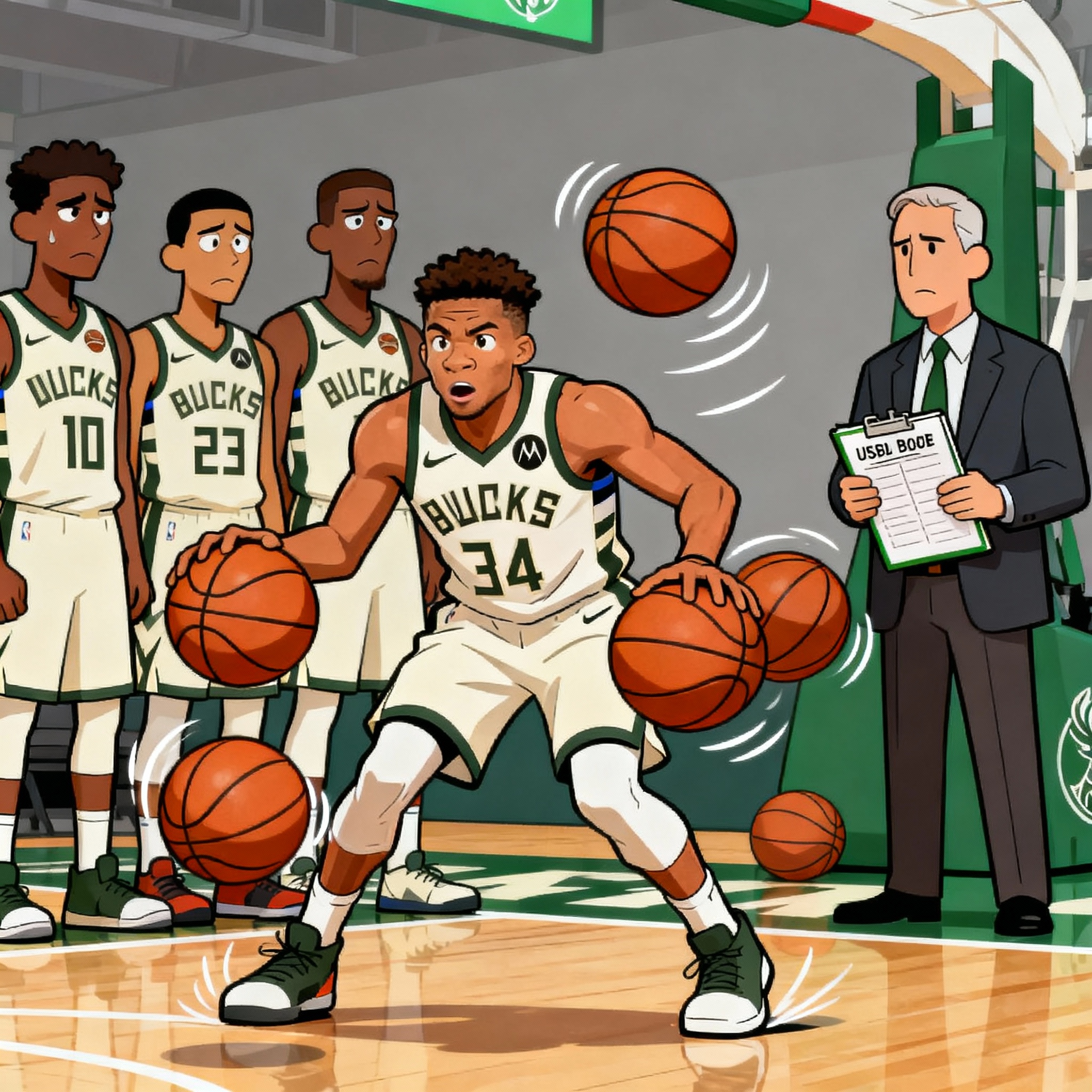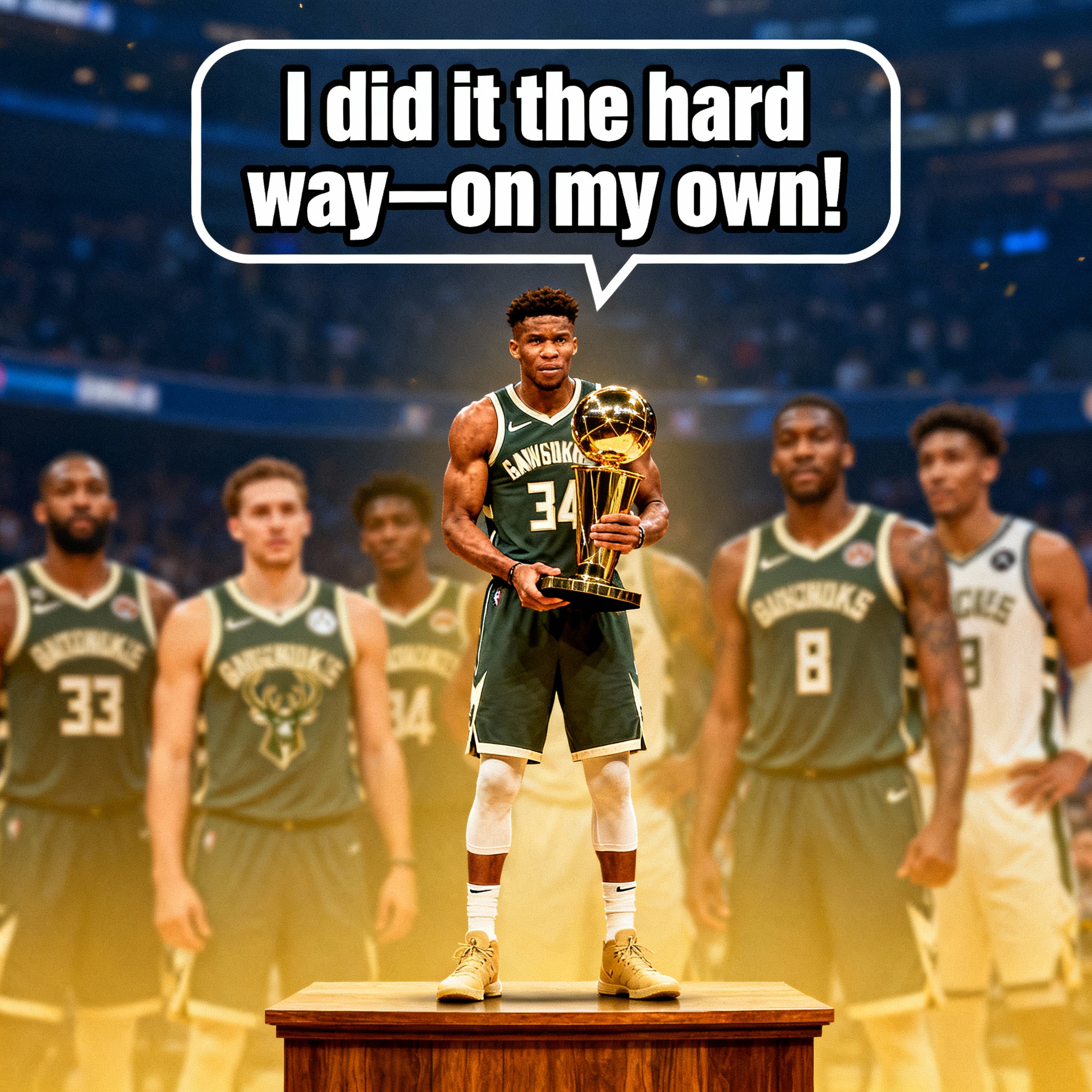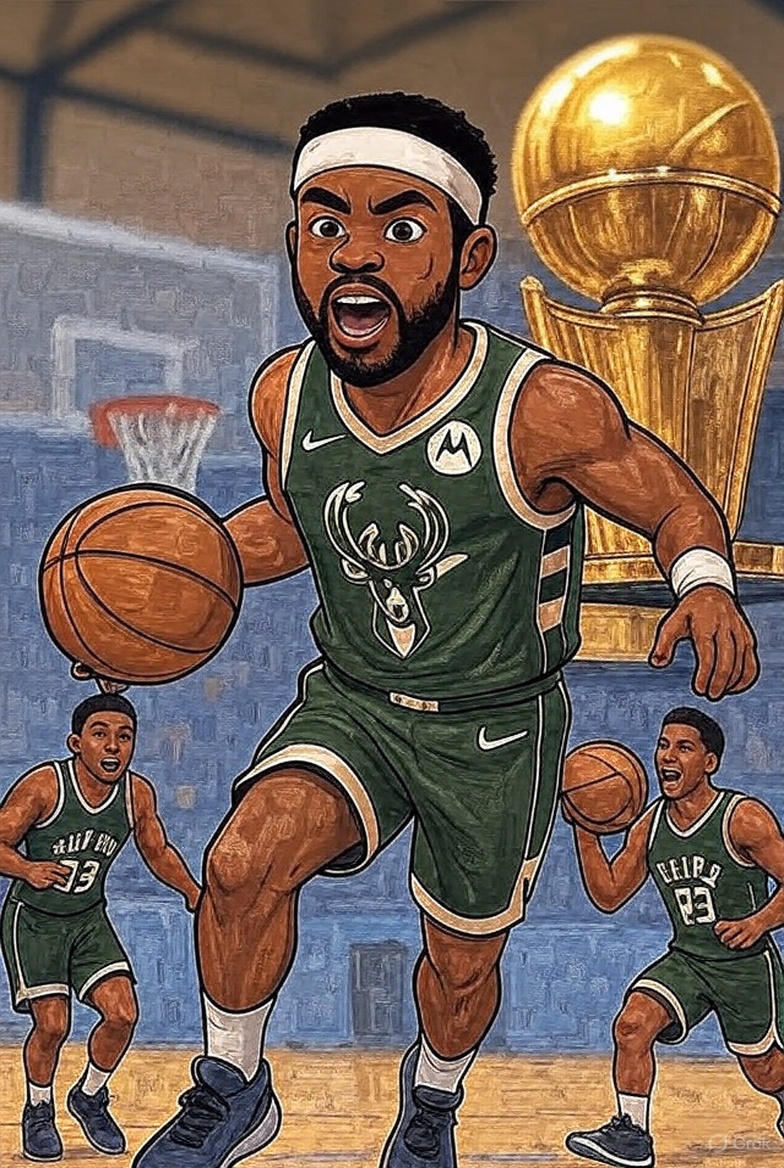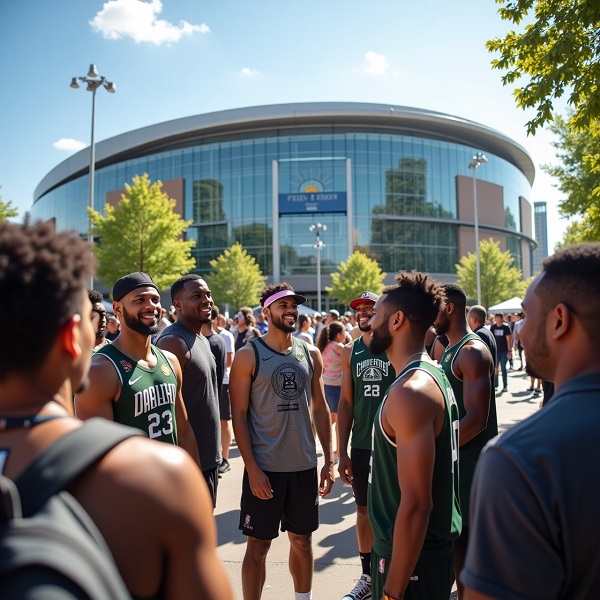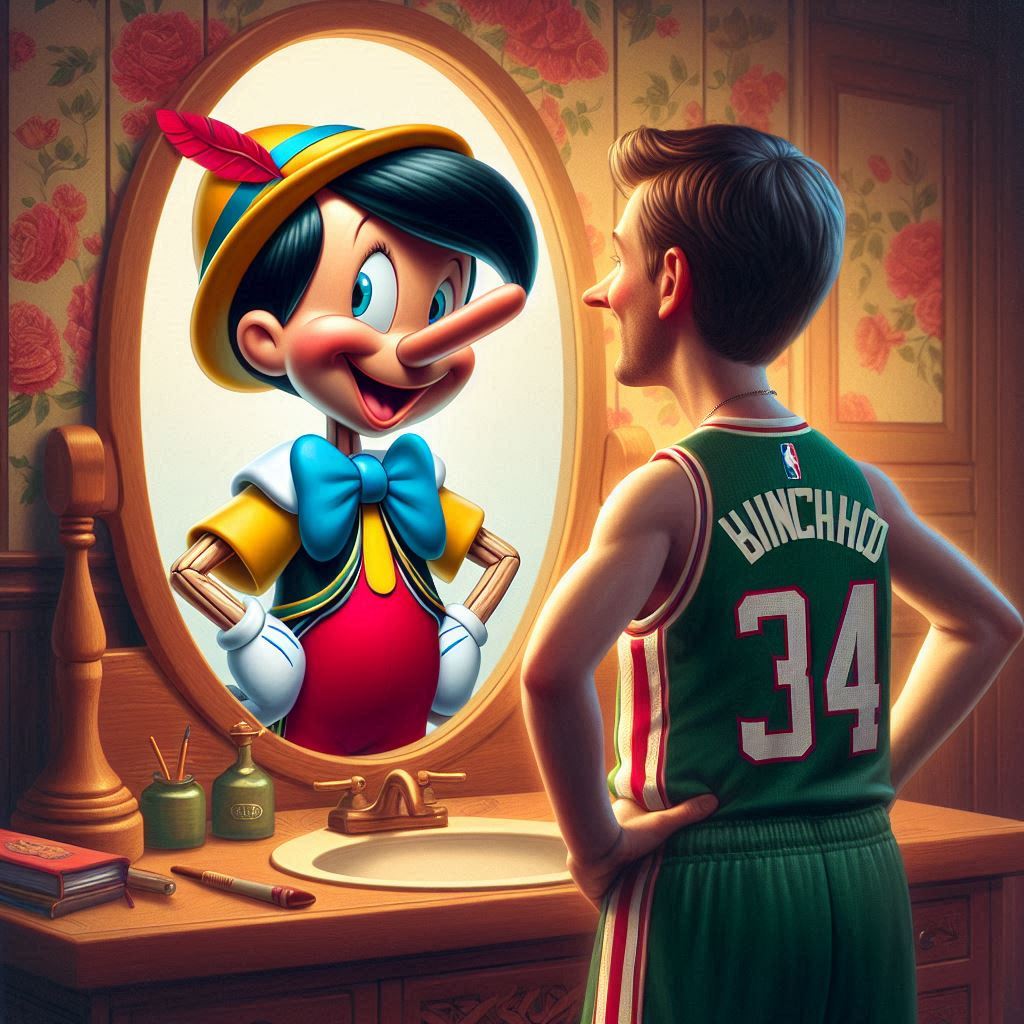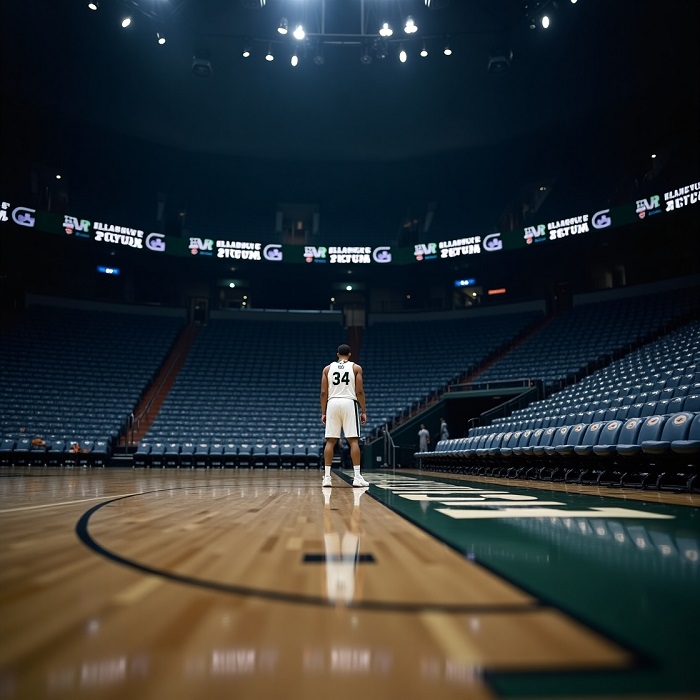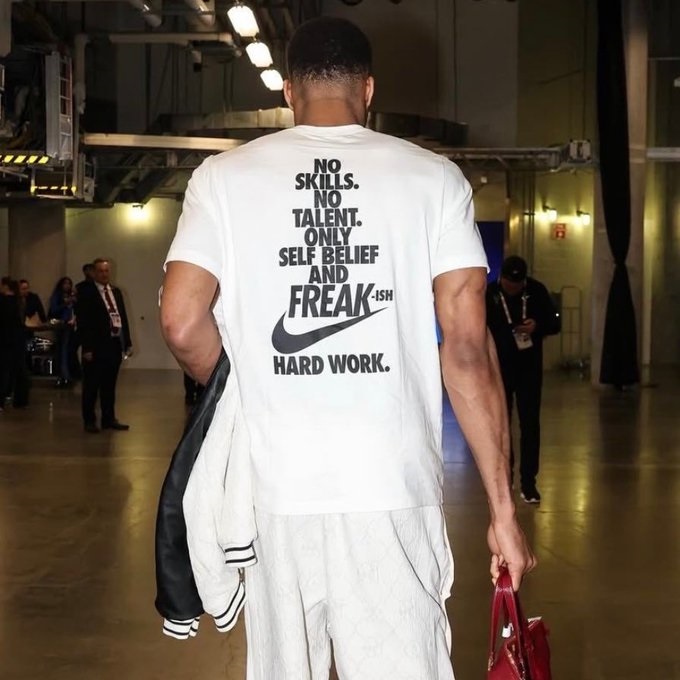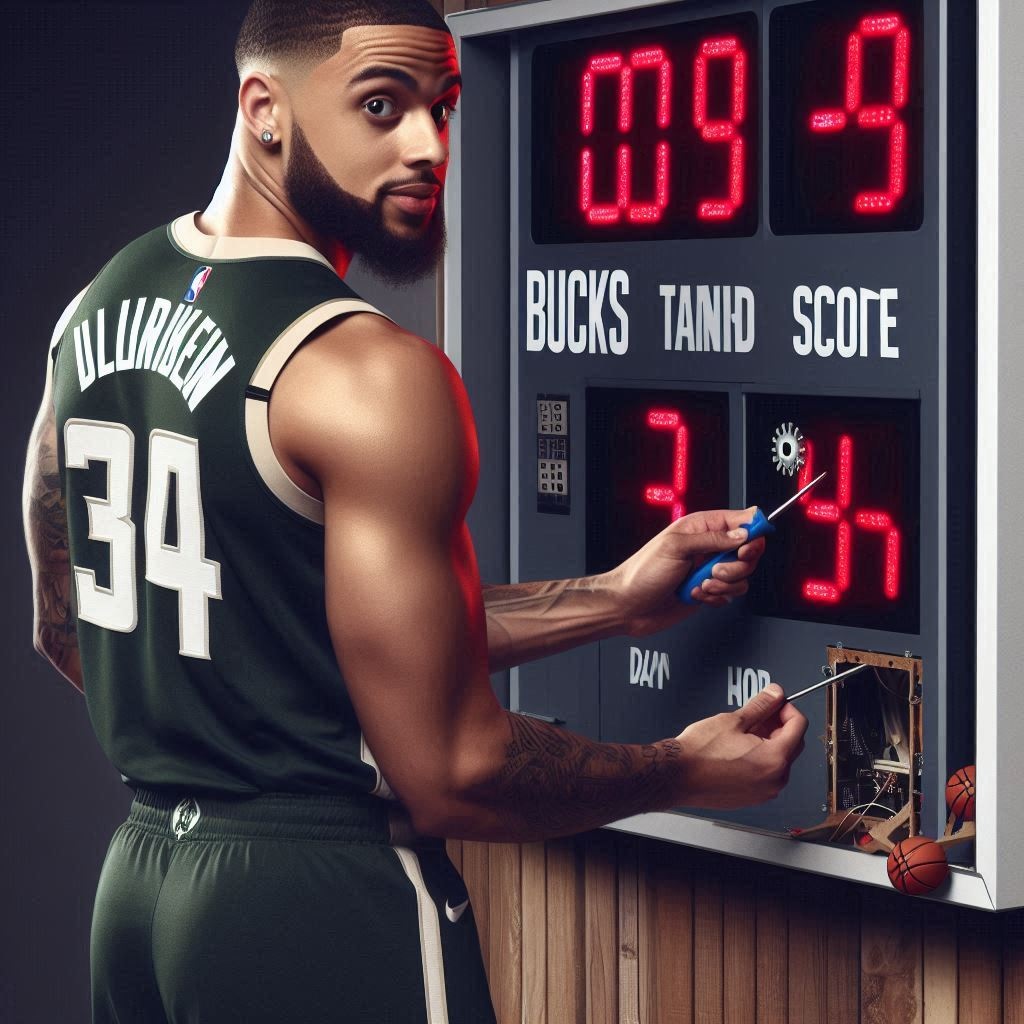Many players who shared the court with Giannis during his tenure left for new teams, seeking better opportunities to shine. While no former Bucks player has explicitly blamed Giannis YET for their failure to “fully bloom” in Milwaukee, the dynamics of playing alongside a ball-dominant superstar can limit roles and opportunities. I consider it more and more likely that over the years we will hear horror stories about how he squashed team mates’ chances and how they bloomed away from him.
The Giannis Effect: A Double-Edged Sword
Giannis’ game is a force of nature but his high-usage style (often exceeding 30% usage rate) means the Bucks’ offense revolves around him, which can marginalize teammates who need the ball to thrive. The Bucks’ roster-building strategy has prioritized veterans and role players to complement Giannis, often leaving younger or secondary stars with limited touches. While this approach led to a title, it’s sparked speculation about whether some players felt stifled. Some examples:
1. Malcolm Brogdon (2016–2019)
Bucks Tenure: Drafted 36th overall in 2016, Malcolm Brogdon quickly became a key contributor, earning the 2017 Rookie of the Year award. He averaged 12.8 points, 3.4 rebounds, and 3.8 assists over three seasons, shooting 40.2% from three. His steady play helped the Bucks reach the Eastern Conference Finals in 2019.
Why He Left: In 2019, Brogdon became a restricted free agent, and the Bucks faced a luxury tax crunch. They facilitated a sign-and-trade to the Indiana Pacers for a first-round pick and two second-rounders, prioritizing cap flexibility to retain Khris Middleton and Brook Lopez. Brogdon later expressed disappointment, noting he wanted to stay but felt the Bucks’ financial constraints and roster priorities didn’t align with his value.
Post-Bucks Career: In Indiana, Brogdon blossomed into a primary ball-handler, averaging 19.1 points and 7.0 assists in his first season (2019–20). He later joined the Boston Celtics, winning Sixth Man of the Year in 2023, and now starts for the Washington Wizards, posting career-high numbers. His role as a lead guard in Indiana and Boston suggests he needed more touches than Milwaukee’s Giannis-centric system allowed.
Did Giannis Play a Role?: There’s no direct evidence of Brogdon blaming Giannis, but his comments about the Bucks’ “business decision” hint at frustration with their roster strategy. Giannis’ ball-dominant style limited Brogdon’s playmaking opportunities, as the Bucks leaned on him as a catch-and-shoot guard rather than a primary creator. Brogdon’s success elsewhere suggests he outgrew the secondary role Milwaukee envisioned.
2. Eric Bledsoe (2017–2020)
Bucks Tenure: Acquired from the Phoenix Suns in 2017, Eric Bledsoe was a dynamic point guard who complemented Giannis with his defense and athleticism. He averaged 15.4 points, 4.6 assists, and 1.5 steals over three seasons, earning All-Defensive First Team honors in 2019. However, his playoff struggles—shooting 31.5% from the field in the 2019 ECF—drew criticism.
Why He Left: In 2020, the Bucks traded Bledsoe, Grayson Allen, and draft picks to the New Orleans Pelicans for Jrue Holiday, aiming to bolster their championship hopes. Bledsoe’s inconsistent postseason play and the Bucks’ urgency to maximize Giannis’ prime drove the move. Bledsoe didn’t publicly criticize Milwaukee, but reports suggested he felt underutilized offensively.
Post-Bucks Career: In New Orleans, Bledsoe averaged 12.2 points and 3.8 assists, a step down from his Bucks role. He later bounced between the Clippers and Trail Blazers before retiring in 2024. While he didn’t achieve greater success, his time in New Orleans offered more ball-handling freedom, though injuries and age (31 at the trade) limited his impact.
Did Giannis Play a Role?: No explicit blame surfaced, but Bledsoe’s role as a defensive specialist and secondary scorer in Milwaukee contrasted with his earlier days as a primary option in Phoenix. Giannis’ dominance and the Bucks’ shift to a heliocentric offense may have restricted Bledsoe’s ability to showcase his full skill set, contributing to perceptions that he underperformed.
3. Jrue Holiday (2020–2023)
Bucks Tenure: Acquired in a blockbuster trade in 2020, Jrue Holiday was instrumental in the Bucks’ 2021 championship, providing elite perimeter defense and clutch playmaking. He averaged 17.7 points, 6.4 assists, and 1.5 steals over three seasons, earning All-Defensive honors and fan adoration.
Why He Left: In 2023, the Bucks traded Holiday to the Portland Trail Blazers (who flipped him to the Boston Celtics) as part of a package for Damian Lillard. The move was driven by Giannis’ public pressure to win another title and the front office’s belief that Lillard’s offensive firepower would elevate the team. Holiday expressed shock and hurt, having wanted to retire in Milwaukee, but didn’t directly blame Giannis even though Giannis obviously signed off on the deal.
Post-Bucks Career: In Boston, Holiday thrived as a two-way star, winning his second NBA title in 2024. His role as a complementary piece alongside Jayson Tatum and Jaylen Brown allowed him to focus on defense and timely scoring, arguably a better fit than Milwaukee’s high-pressure environment. His success in Boston suggests he adapted well to a new system.
Did Giannis Play a Role?: Holiday hasn’t publicly blamed Giannis, but the trade stemmed from Giannis’ vocal desire for roster upgrades, as he hinted at leaving if the Bucks didn’t contend. Holiday’s departure was a byproduct of Milwaukee’s “win-now” mentality around Giannis, and some speculate his playmaking was underutilized in a system tailored to Giannis’ drives and kickouts.
4. Jabari Parker (2014–2018)
Bucks Tenure: Selected second overall in 2014, Jabari Parker was expected to be Giannis’ co-star. He averaged 15.3 points and 5.5 rebounds over four injury-plagued seasons, showing flashes of scoring prowess but struggling defensively. Two ACL injuries derailed his development, and he clashed with coach Jason Kidd over his role.
Why He Left: In 2018, the Bucks declined to re-sign Parker, who joined the Chicago Bulls on a two-year, $40 million deal. Parker later said he felt the Bucks didn’t invest in his growth, citing inconsistent roles and a lack of offensive freedom. He didn’t name Giannis directly but alluded to the team’s shift toward a Giannis-centric system.
Post-Bucks Career: Parker’s career spiraled after Milwaukee, with stints in Chicago, Washington, Atlanta, Sacramento, and Boston yielding diminishing returns. He last played in the NBA in 2022 and now competes overseas. While he didn’t bloom elsewhere, his Chicago signing was seen as a chance to reclaim his stardom, which never materialized due to injuries and fit issues.
Did Giannis Play a Role?: Parker’s comments about the Bucks’ system indirectly point to Giannis’ rise as the focal point. As Giannis emerged as a superstar, Parker’s role shrank, exacerbated by his injuries and defensive limitations. The Bucks’ pivot to building around Giannis likely marginalized Parker, though his own health issues were a bigger factor.
5. Donte DiVincenzo (2018–2022)
Bucks Tenure: Drafted 17th overall in 2018, Donte DiVincenzo evolved into a valuable 3-and-D guard, averaging 9.0 points and 4.0 rebounds over four seasons. He played a key role in the 2021 championship, shooting 40.1% from three in the playoffs.
Why He Left: In 2022, DiVincenzo was traded to the Sacramento Kings in a deal for Serge Ibaka, as the Bucks sought frontcourt depth. He later signed with the Golden State Warriors and then the New York Knicks. DiVincenzo expressed frustration with the Bucks’ decision, feeling he was blossoming into a starter but was expendable due to roster priorities.
Post-Bucks Career: DiVincenzo thrived in New York, averaging 15.5 points and 3.7 rebounds in 2023–24, earning a starting role and All-Star buzz. His growth as a two-way guard suggests he needed a larger offensive role than Milwaukee offered, where he was primarily a spot-up shooter.
Did Giannis Play a Role?: DiVincenzo hasn’t blamed Giannis directly, but his expanded role in New York highlights how Giannis’ ball dominance limited his touches. The Bucks’ system prioritized Giannis’ playmaking, relegating DiVincenzo to a 3-and-D role that capped his potential as a creator.
Other Notable Departures
- Thon Maker (2016–2019): The 10th overall pick in 2016, Maker showed promise as a stretch big but averaged just 4.6 points in Milwaukee. Traded to Detroit in 2019, he sought a bigger role but faded from the NBA by 2021. His exit was more about fit than Giannis’ influence, though the Bucks’ focus on veterans like Brook Lopez limited his minutes.
- Grayson Allen (2021–2023): Acquired in 2021, Allen became a sharpshooting starter, averaging 10.7 points and shooting 40.8% from three. Traded to Phoenix in the Lillard deal, he signed a four-year, $70 million extension in 2024. Allen hasn’t criticized Giannis, but his larger role in Phoenix suggests he benefited from a system less centered on one star.
Analyzing the Narrative: Is Giannis to Blame?
No player has explicitly said, “Giannis held me back,” but the pattern is clear: many who left Milwaukee thrived in systems where they had more offensive freedom or defined roles. Giannis’ high-usage style and the Bucks’ championship-or-bust mentality often forced teammates into complementary roles—spot-up shooting, defense, or hustle plays. This can stifle players who crave ball-handling or scoring opportunities, as seen with Brogdon and DiVincenzo.
However, blaming Giannis oversimplifies the issue. The Bucks’ front office, constrained by luxury tax limits and a lack of draft picks, prioritised veterans over developing young talent. Injuries (Parker, Bledsoe) and coaching changes (five head coaches since 2013) also disrupted continuity. Giannis himself has emphasised winning over individual glory, but his pressure to contend—evident in comments like, “I don’t want to be 20 years on the same team and don’t win another championship”—has pushed the Bucks to make win-now trades, often at the expense of players like Holiday or Brogdon.
A Star’s Shadow or a Team’s Strategy?
Giannis Antetokounmpo’s dominance has undeniably shaped the Bucks’ identity, and while no player has directly blamed him for their departure, his high-usage role and the team’s win-now approach have limited opportunities for some. Players like Brogdon, Holiday, and DiVincenzo found greater success elsewhere, but their exits were driven more by financial constraints, trades, or roster fit than personal grievances with Giannis. The “Greek Freak” is both a blessing and a challenge—a superstar who demands a system tailored to his strengths. Players around him need to have zero ego and put up with the franchise focused on hiding Giannis’ many weaknesses.
As the Bucks face another uncertain offseason, with Damian Lillard’s injury and trade rumors swirling, the question remains: can Milwaukee build a roster that maximizes Giannis while empowering others to bloom? Or will more players leave, chasing opportunities beyond his shadow?



